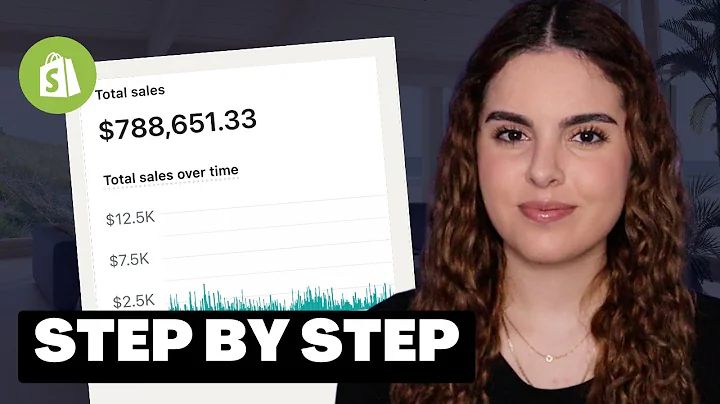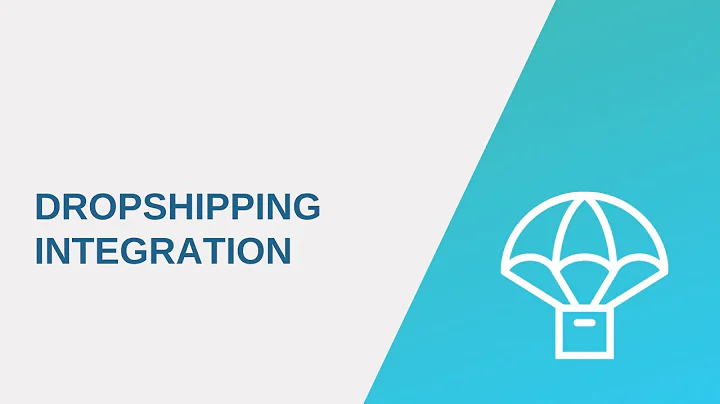Maximize Profit with 3D Printing: Find Profitable STL Files and Sell on Etsy
Table of Contents
- Introduction
- Finding Profitable STLs to Sell Online
- Searching for STLs on Thingiverse
- Filtering by License Type
- Choosing the Right Models to Sell
- Preparing the STLs for Listing on Etsy
- Downloading and Slicing the STLs
- Calculating the Production Cost
- Creating a Listing on Etsy
- Uploading Images and Videos
- Writing an Engaging Description
- Choosing the Right Title and Tags
- Managing Inventory and Shipping
- Setting Quantity and Restock Options
- Selecting Shipping Profiles
- Considering International Shipping
- Pricing Strategies and Promotions
- Determining Pricing for Maximum Profit
- Using Promotions to Drive Sales
- Handling Returns and Exchanges
- Dealing with Returns for Custom Items
- Implementing a Customer-Focused Return Policy
- Advertising and Marketing
- Exploring Etsy's Advertising Options
- Utilizing Social Media and Other Channels
- Scaling the Business and Dealing with Challenges
- Expanding Product Offerings and Variations
- Managing Production and Fulfillment
- Overcoming Common Obstacles in the 3D Printing Business
- Conclusion
How to Find Profitable STLs to Sell Online and List Them on Etsy
In this article, we will walk you through the process of finding profitable STL files to sell online and listing them on Etsy. With the right approach, you can turn your 3D printing hobby into a lucrative business. We will cover everything from searching for STL files, filtering by license type, preparing the files for listing, creating a compelling listing on Etsy, managing inventory and shipping, pricing strategies, handling returns and exchanges, advertising and marketing, scaling the business, and dealing with challenges along the way.
1. Introduction
Are you passionate about 3D printing and looking to monetize your skills? Selling 3D printed products on platforms like Etsy can be a great way to generate income. However, finding the right STL files to sell and effectively listing them on Etsy requires a strategic approach. In this article, we will guide you step-by-step through the process, providing valuable insights and tips to help you succeed in the 3D printing business.
2. Finding Profitable STLs to Sell Online
The first step in building a successful 3D printing business is finding profitable STL files to sell online. While there are various websites that offer STL files, we will focus on the popular platform Thingiverse for this guide. Here's how you can find the right models to sell:
Searching for STLs on Thingiverse
Thingiverse is a well-known website for downloading and sharing 3D printable models. Start by visiting the site and exploring the wide range of available STL files. Use the search bar to find models related to your niche or target audience.
Filtering by License Type
To ensure you can legally sell the STL files, filter the search results by license type. Look for models with licenses such as Creative Commons Attribution or Creative Commons Attribution ShareAlike. Avoid models with licenses that restrict commercial use.
Choosing the Right Models to Sell
While browsing through the models, consider factors such as popularity, uniqueness, and potential demand. Look for models with a significant number of downloads, remixes, and positive feedback. Choose models that have a broad appeal and are likely to generate sales.
3. Preparing the STLs for Listing on Etsy
Once you have identified the profitable STL files, the next step is preparing them for listing on Etsy. This involves downloading and slicing the STL files and calculating the production cost. Follow these steps:
Downloading and Slicing the STLs
Download the selected STL files from Thingiverse. Import them into your slicing software, such as PrusaSlicer, to generate the G-code files for printing. Take into account factors like print time, material usage, and complexity when slicing the models.
Calculating the Production Cost
To determine the production cost, consider the filament cost, electricity cost, and other consumables used in the printing process. Factor in the time spent on post-processing, packaging, and shipping as well. This will help you arrive at a fair and profitable price for your products.
4. Creating a Listing on Etsy
Now that your STL files are ready, it's time to create a compelling listing on Etsy. This involves uploading images and videos, writing an engaging description, and choosing the right title and tags. Here's how to maximize the appeal of your listing:
Uploading Images and Videos
Capture high-quality images of your 3D printed product from various angles. Highlight its features, functionality, and any unique aspects. Consider using a photo booth or a rotating stand to showcase your products effectively. Include a video to provide a more immersive experience and demonstrate the product in action.
Writing an Engaging Description
Craft a captivating description that emphasizes the benefits and appeal of your product. Clearly communicate its purpose, dimensions, materials used, and customization options (if any). Incorporate keywords naturally to improve search visibility, but avoid keyword stuffing. Engage your potential customers by telling a story or sharing your inspiration behind the product.
Choosing the Right Title and Tags
Select a title that accurately describes your product and incorporates relevant keywords. Keep it concise and avoid using generic terms. Utilize all available tags (13 in total) to increase the visibility of your listing. Mix general and specific tags, including variations of keywords to cover a wider range of search queries.
5. Managing Inventory and Shipping
Efficiently managing inventory and shipping is crucial for a smooth operation. Set the quantity and restock options appropriately, select shipping profiles based on your target market, and consider international shipping. Follow these best practices:
Setting Quantity and Restock Options
Determine the quantity of each product you can reliably fulfill. If you have limited stock, consider manual restocking to monitor sales and update listings accordingly. Avoid automatic restocking, as it may lead to inventory management issues and negatively impact your shop's conversion rate.
Selecting Shipping Profiles
Create shipping profiles on Etsy that align with your shipping preferences and offer a good customer experience. Consider factors such as shipping carriers, transit times, packaging materials, and handling fees. Be transparent about your shipping policies and clearly communicate them in your listings.
Considering International Shipping
While international shipping expands your potential customer base, it also brings additional complexities. Research and understand the customs regulations, shipping costs, and transit times for different countries. Decide whether you want to offer international shipping right from the start or gradually expand into it as your business grows.
6. Pricing Strategies and Promotions
Determining the right pricing strategy is essential for maximizing profit and attracting customers. Experiment with different pricing levels and utilize promotions to drive sales. Consider the following tips:
Determining Pricing for Maximum Profit
Set your prices based on the production cost, market demand, and perceived value of your products. Conduct competitive research to ensure your prices are competitive yet profitable. Gradually increase prices once you establish a strong presence and reputation in the market.
Using Promotions to Drive Sales
Leverage Etsy's promotional tools to boost visibility and drive sales. Offer discounts, free shipping, or bundle deals to incentivize customers. Plan promotions strategically, considering peak buying seasons, holidays, and special events. Monitor the results and adjust your promotions based on customer response.
7. Handling Returns and Exchanges
Establishing clear policies for returns and exchanges is paramount for customer satisfaction. While custom-made items may have limitations, it's essential to handle complaints and mistakes professionally. Follow these guidelines:
Dealing with Returns for Custom Items
Custom-made items may have limited return options due to their personalized nature. However, if a mistake occurs on your part or the item doesn't match the description, offer a return or refund as appropriate. Resolve any issues promptly and professionally to maintain a positive reputation.
Implementing a Customer-Focused Return Policy
Craft a clear and customer-friendly return policy that covers various scenarios. Outline the conditions for returns, such as time limits, conditions of the item, and return shipping responsibilities. Clearly communicate your policy in your listings and respond to customer inquiries promptly.
8. Advertising and Marketing
Effectively promoting your Etsy shop can significantly impact your sales and visibility. Explore Etsy's advertising options, utilize social media and other channels, and adopt marketing strategies tailored to your target audience. Consider the following:
Exploring Etsy's Advertising Options
Etsy offers various advertising options to increase your shop's visibility. Experiment with promoted listings, offsite ads, and Etsy Ads Manager to reach a wider audience. Allocate a budget for advertising and monitor the performance of your campaigns to optimize results.
Utilizing Social Media and Other Channels
Leverage the power of social media to promote your products and engage with potential customers. Create accounts on platforms like Instagram, Facebook, and Pinterest to showcase your 3D printed items. Collaborate with influencers, participate in relevant groups and forums, and explore other channels to expand your reach.
9. Scaling the Business and Dealing with Challenges
As your 3D printing business grows, you will face new challenges and opportunities. Explore strategies to scale your operations, manage production and fulfillment efficiently, and overcome common obstacles. Consider the following:
Expanding Product Offerings and Variations
Diversify your product offerings to cater to a broader customer base. Consider adding new designs, variations, and complementary items. Continuously innovate and follow market trends to stay competitive in the evolving 3D printing industry.
Managing Production and Fulfillment
As order volumes increase, streamline your production process to meet demand efficiently. Invest in additional 3D printers, optimize print settings, and consider outsourcing certain tasks if necessary. Implement robust inventory management systems and partner with reliable shipping carriers to ensure timely fulfillment.
Overcoming Common Obstacles in the 3D Printing Business
The 3D printing business comes with its own set of challenges, such as print failures, material limitations, and intellectual property concerns. Stay updated on the latest advancements in 3D printing technology, educate yourself on legal aspects, and continuously improve your skills to overcome these obstacles.
10. Conclusion
Building a successful 3D printing business on platforms like Etsy requires a combination of strategic decision-making, product selection, effective listings, and continuous improvement. By following the steps outlined in this article, you can set yourself up for success in the 3D printing market. Embrace creativity, stay customer-focused, and adapt to changing trends and customer demands. With dedication and perseverance, your 3D printing business can thrive and generate substantial income. Good luck on your entrepreneurial journey!















